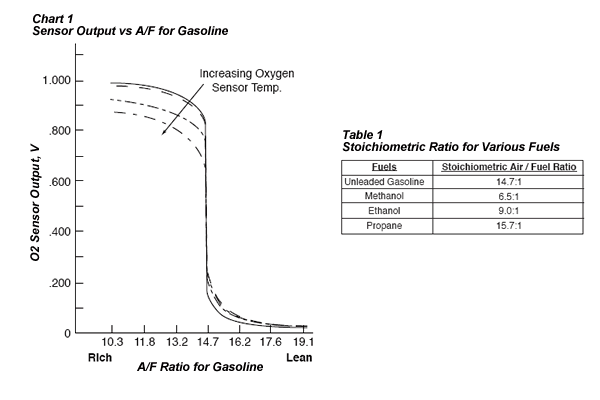Marshall instruments specializes in OEM, private label and custom narrow band and wide band air fuel gauges. Contact us today to discuss your air fuel gauge requirements.
Why Use an Air/Fuel Gauge?
Air/Fuel gauges monitor the air/fuel ratio of gasoline engines when wired to an O2 sensor. The AFR gauge can indicate if your fuel demand is higher than the fuel system capability; or if additional tuning is required; or there is an intake vacuum leak; or if the O2, as well as other sensors fail. This information is extremely important for users with performance add-ons.
Too LEAN
If your AFR is LEAN most of the time, there is a chance that engine damage may occur. There is too much air and not enough fuel in the air-fuel mixture. During wide open throttle operation, the reading should never be in the LEAN range.
Too RICH
If your AFR is RICH most of the time you may not be burning fuel efficiently thus not obtaining full power and expelling more pollutants in your exhaust.
Narrow Band Air / Fuel Ratio Meter Operation
The narrow band A/F Ratio Meter is a voltmeter with a range of 0 to 1 Volt. The
meter displays the output voltage of the vehicles oxygen sensor.

The stoichiometric (STOICH) air/fuel ratio is the chemically correct
ratio. This means theoretically all of the oxygen and all of the fuel are
consumed. The mixture is neither rich nor lean. However, due to the
fact that combustion is never perfect in the real world, there will
always be a small amount of oxygen left in the exhaust. This small
amount that is left is what the oxygen sensor measures. The smaller
the amount of oxygen that is left in the exhaust, the richer the A/F
ratio is, and the higher the oxygen sensor voltage is. The on-board
computer or Powertrain Control Module (PCM) monitors the voltage
from the oxygen sensor. If the PCM sees an oxygen sensor voltage
greater than .450V, it immediately starts to reduce the amount of fuel
that is metered into the engine by reducing the on time to the fuel
injectors. When this happens, the A/F ratio starts to go in the lean
direction, and the oxygen sensor voltage starts to go down. When the
voltage drops below .450V, the PCM immediately starts to increase
the fuel metered to the engine by increasing the on time to the fuel
injectors to produce a richer A/F ratio. This occurs until the oxygen
sensor voltage goes above .450V. This repeating cycle happens very
fast (many times per second). The PCM is said to be in closed loop.
It is constantly monitoring the oxygen sensor voltage and adjusting
the on time of the fuel injectors to maintain a STOICH A/F ratio. This
A/F ratio produces the lowest harmful exhaust emissions, and allows
the catalytic converter to operate at peak efficiency, therefore
reducing the exhaust emissions further.
Since the oxygen sensor output is very accurate and sensitive at the
STOICH A/F ratio, it will cause the A/F meter LED's to bounce back
and forth rapidly. A very small change in A/F ratio causes a large
change in oxygen sensor voltage as can be seen on the graph. This
rapid cycling is normal when the PCM is in closed loop and trying to
maintain a STOICH A/F ratio. The oxygen sensor is also very
accurate at indicating an A/F ratio that is richer or leaner than STOICH. However it can not indicate the exact richness or leanness
due to the fact that the oxygen sensor output changes with the
oxygen sensor temperature and wear. As the sensor temperature
increases, the voltage output will decrease for a given A/F ratio in the
rich area, and increase in the lean area as shown on the graph.
During wide open throttle (throttle opening greater than 80% as
indicated by the throttle position sensor) the A/F ratio will be forced
rich by the PCM for maximum power. During this time the oxygen
sensor will output a rich signal/voltage, but the PCM will ignore the
signal. The signal will be ignored because it is not accurate for
indicating the exact richness. The PCM is now in open loop, and
relies on factory programmed maps to calculate what the on time of
the fuel injectors should be to provide a rich A/F ratio for maximum
power. The A/F ratio meter should indicate rich during this time.
During hard deceleration the PCM will command an extremely lean
mixture for lowest exhaust emissions. This may cause the signal to go
outside the range that the meter will indicate.

About Us ·
Search Catalog ·
FAQs ·
Contact ·
Site Map
· Home

